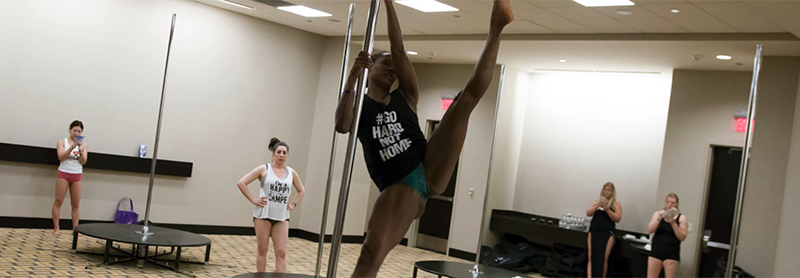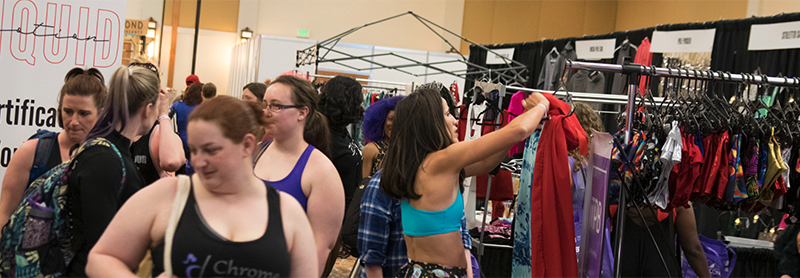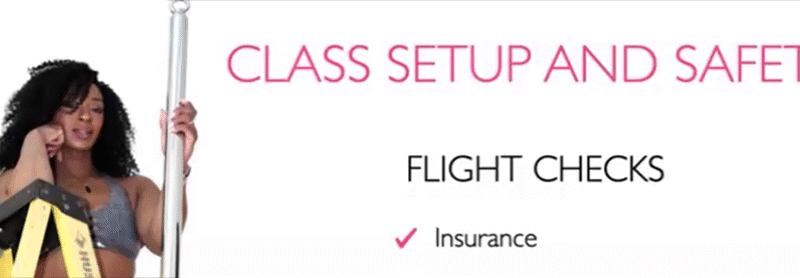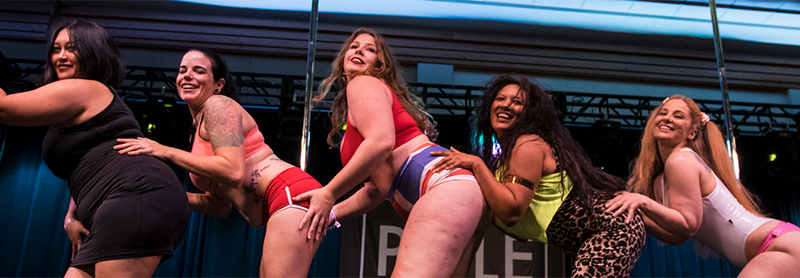A train-cation is a trip (usually away from home) where you focus for a specific…

How to Structure Your Pole Dance Class (Part 3 of 3)
Whew! Who knew there was so much to stay about how to structure classes!
So far we have covered student to teacher ratios, class length, drop in vs session classes, and considerations for monthly programming, but we aren’t done yet! Now we are here to talk about how we recommend structuring the movements for each individual class.
Not to be confused with this post on How to Improve Your Group Fitness Class which is more about setting the vibes.
What to Consider in the Warm Up
The warm up is important for both coach and student.
It allows the instructor to start moving their body, it helps the students be prepared to do the moves being taught that day, and it is a screening tool for the instructor to see which student may need extra help or may have a chronic injury or other compensation that could impact their movement today.
A proper warm up also reduces the instance of delayed-onset muscle soreness.
More on warmups in this post! And this members-only webinar! And this webinar from Virtual PoleCon 2020!
What to Consider in the Movement Portion
The bulk of your class will be the skills, choreography, or other content you plan to present.
Skills should be level-appropriate for the class and the instructor should have progressions and regressions to offer students.
It’s totally okay to change your plan mid-class if the majority of students are struggling more than anticipated with the content.
Of course, the opposite can also happen–students are crushing it and fly through the material you provided. This is a great opportunity to add some stage presence and/or sequencing work into class.
How to Include Conditioning Exercises
Always include some conditioning exercises in your pole classes.
Conditioning can be as simple as repeating the same movement multiple times on the pole, holding a movement for time, and/or including general off-the-pole exercises you might see regularly in a gym like planks, squats, etc.
Some studio may choose to have entire conditioning classes on or off-the-pole with or without tools like weights or resistance bands, in this case, conditioning should be built into the class usually after a warm-up and support the movements practiced during class.
For more on conditioning, check out this members-only webinar from Neola Wilby, author of the book “Strength and Conditioning for Pole.”
How to Include a Freestyle or Free Movement Time
Consider including a bit of time for freestyling or free movement at the end of every class.
This allows students to add their own “flavor” into the skills they learned. While some students love moving on their own, others may need suggestions for what “to do” during this time and benefit from a prompt. Unless this is a free movement focused class, consider leaving a small amount of time such as one song.
Don’t Forget the Cool Down
A “cool down” can be anything from stretching to deep breathing.
The point of cool down is to bring student’s heart rates back down, regulate their nervous system, and get them ready to transition back to the real world outside the studio.
If students are doing classes back to back, you may consider having them skip the cool down and proceed to the warm-up of the next class.
While pole is a unique discipline, a pole class is still a movement class. Most group fitness programs maintain this structure of warm up-work-cool down as a functional way to teach movement.
Jumping into a workout without a proper warm up increases risk of injury and failing to cool down properly can lead to increased physiological stress. Make sure to allocate time in each of your classes for a proper warmup and cool down.



